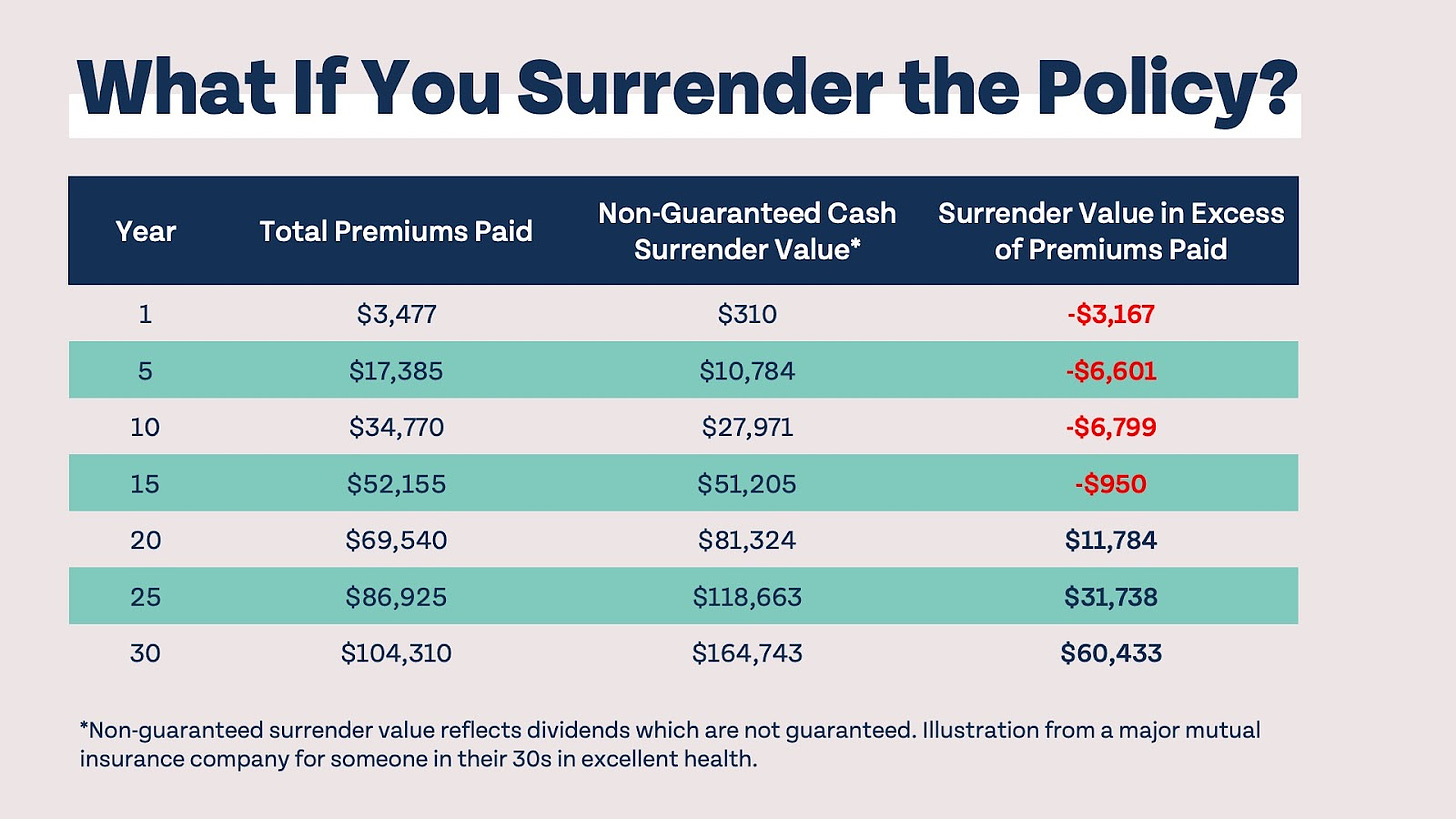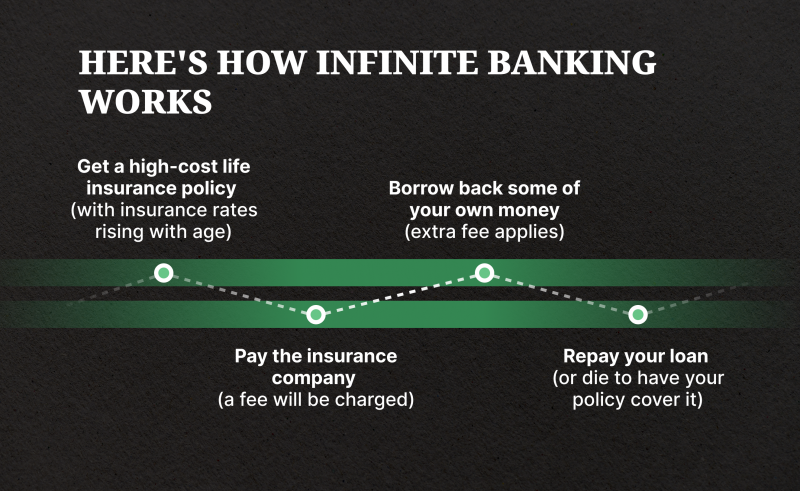All Categories
Featured
Table of Contents
Okay, to be reasonable you're actually "banking with an insurance policy company" instead of "financial on yourself", but that principle is not as very easy to sell. Why the term "unlimited" financial? The idea is to have your cash operating in multiple locations at the same time, as opposed to in a solitary location. It's a little bit like the idea of purchasing a home with money, after that borrowing versus the residence and placing the cash to operate in an additional investment.
Some individuals like to talk regarding the "speed of cash", which primarily indicates the very same point. That does not indicate there is absolutely nothing worthwhile to this principle once you get past the advertising and marketing.
The entire life insurance coverage sector is tormented by overly costly insurance policy, huge payments, shady sales techniques, reduced prices of return, and improperly enlightened customers and salespeople. However if you desire to "Bank on Yourself", you're mosting likely to have to wade into this market and actually purchase entire life insurance coverage. There is no alternative.
The guarantees inherent in this item are essential to its feature. You can borrow versus most types of cash money worth life insurance policy, but you should not "financial institution" with them. As you acquire a whole life insurance plan to "bank" with, bear in mind that this is an entirely different area of your economic plan from the life insurance section.
As you will certainly see below, your "Infinite Banking" plan truly is not going to dependably give this crucial economic feature. Another issue with the truth that IB/BOY/LEAP counts, at its core, on a whole life plan is that it can make getting a policy problematic for numerous of those interested in doing so.
Infinite Life Insurance
Harmful leisure activities such as SCUBA diving, rock climbing, sky diving, or flying likewise do not mix well with life insurance coverage items. The IB/BOY/LEAP supporters (salesmen?) have a workaround for youbuy the plan on someone else! That might function out great, since the factor of the plan is not the survivor benefit, however bear in mind that buying a plan on minor kids is extra expensive than it should be considering that they are usually underwritten at a "standard" price instead than a liked one.

Most policies are structured to do a couple of things. Many typically, plans are structured to make best use of the compensation to the representative marketing it. Negative? Yes. It's the truth. The payment on an entire life insurance policy policy is 50-110% of the initial year's premium. Often plans are structured to make best use of the survivor benefit for the premiums paid.
With an IB/BOY/LEAP policy, your objective is not to take full advantage of the death advantage per dollar in premium paid. Your goal is to take full advantage of the cash value per dollar in costs paid. The price of return on the policy is very important. One of the most effective methods to maximize that factor is to get as much cash as possible into the plan.
The very best way to enhance the rate of return of a plan is to have a reasonably little "base plan", and after that put more cash into it with "paid-up enhancements". As opposed to asking "Just how little can I place in to get a particular death advantage?" the inquiry ends up being "Exactly how much can I legitimately took into the plan?" With even more money in the plan, there is more cash money value left after the costs of the fatality advantage are paid.
A fringe benefit of a paid-up addition over a normal premium is that the compensation rate is lower (like 3-4% rather than 50-110%) on paid-up additions than the base plan. The much less you pay in compensation, the higher your price of return. The rate of return on your cash money worth is still mosting likely to be negative for some time, like all money worth insurance coverage.
Many insurance firms only supply "straight acknowledgment" lendings. With a straight acknowledgment finance, if you borrow out $50K, the dividend rate applied to the cash value each year only applies to the $150K left in the policy.
Life Insurance Be Your Own Bank
With a non-direct recognition lending, the firm still pays the very same returns, whether you have "obtained the money out" (technically versus) the plan or otherwise. Crazy? Why would certainly they do that? Who recognizes? They do. Frequently this function is matched with some much less useful element of the plan, such as a lower returns price than you could obtain from a policy with straight acknowledgment car loans (whole life insurance infinite banking).
The companies do not have a resource of magic cost-free money, so what they give up one location in the plan should be drawn from one more location. If it is taken from an attribute you care much less around and put right into an attribute you care a lot more about, that is a good point for you.
There is another important function, typically called "wash lendings". While it is wonderful to still have actually rewards paid on money you have actually taken out of the policy, you still have to pay interest on that financing. If the reward rate is 4% and the financing is billing 8%, you're not specifically appearing ahead.
With a clean car loan, your funding passion price is the very same as the reward rate on the plan. While you are paying 5% rate of interest on the loan, that passion is completely balanced out by the 5% reward on the lending. So in that regard, it acts similar to you withdrew the money from a savings account.

5%-5% = 0%-0%. Without all three of these factors, this policy simply is not going to work extremely well for IB/BOY/LEAP. Nearly all of them stand to profit from you buying right into this idea.
In truth, there are several insurance representatives speaking about IB/BOY/LEAP as a feature of entire life who are not actually marketing policies with the needed functions to do it! The trouble is that those who know the principle best have a massive conflict of rate of interest and normally blow up the benefits of the principle (and the underlying policy).
Infinite Banking 101
You ought to contrast loaning versus your policy to taking out cash from your interest-bearing account. Return to the beginning. When you have absolutely nothing. No deposit. No cash in investments. No cash in cash worth life insurance policy. You are confronted with a choice. You can place the money in the bank, you can invest it, or you can get an IB/BOY/LEAP plan.
You pay tax obligations on the interest each year. You can conserve some even more cash and placed it back in the financial account to begin to earn passion once again.
It expands over the years with capital gains, dividends, rents, etc. Some of that earnings is strained as you go along. When it comes time to acquire the boat, you offer the financial investment and pay taxes on your long-term capital gains. After that you can save some more money and get some more financial investments.
The cash value not made use of to pay for insurance coverage and payments expands over the years at the reward price without tax drag. It begins with unfavorable returns, however hopefully by year 5 or so has actually damaged also and is expanding at the returns price. When you go to buy the watercraft, you obtain against the plan tax-free.
Infinite Banking Spreadsheets
As you pay it back, the cash you paid back begins growing once again at the reward rate. Those all work rather similarly and you can compare the after-tax rates of return.
They run your credit and offer you a finance. You pay interest on the obtained cash to the financial institution until the financing is repaid. When it is settled, you have an almost pointless watercraft and no cash. As you can see, that is nothing like the first three choices.
Latest Posts
How To Become My Own Bank
Infinite Financial
Infinite Banking With Iul: A Step-by-step Guide ...